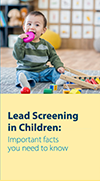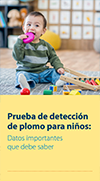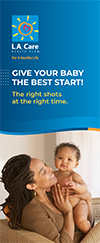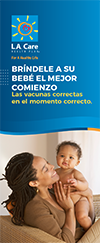Caring for your newborn after delivery
Caring for your baby after delivery is something that a pregnant person should think about and discuss with your doctor, midwife, or doula while going over your birth plan.
Topics of discussion with your provider:
- Delayed Cord Clamping (delay cutting umbilical cord for 30 seconds)
- Skin to skin with mom immediately after delivery
- Breastfeeding within the first hour after birth
- Rooming in with the baby
- Baby’s first bath (delay for 24 hours – wipe baby dry and clean)
Caring for your newborn while at home
Babies may sleep from 12-17 hours a day within the first year. It is important to know what safety precautions to take at home.
To reduce sudden infant death syndrome (SIDS) you can do the following:
- Place a baby on their back to sleep during the first year.
- Remove all stuffed animals, pillows, toys, or anything that is loose in the crib.
- Place the baby to sleep in a firm mattress.
- Dress the baby in warm clothes to avoid using a blanket.
Babies should only be fed breast milk or infant formula during the first six months. If you choose to breastfeed, try to continue for one year if possible. For those who cannot breastfeed or choose not to, please consult your provider for safe and nutritious alternatives. Insurance may cover the cost of medically needed formula.
There are many benefits of breastfeeding, but it isn’t always easy. Don’t give up. Talk to your doctor if you’re having trouble. Keep in mind that breast milk:
- Has just the right amount of protein, fat, sugar and water to help your baby grow
- Helps protect your baby from infection and illness
- Is easier to digest than formula
- Lowers the risk of Sudden Infant Death Syndrome (SIDS)
- Can lower the risk of childhood overweight and obesity
- Can help reduce jaundice
- Can lower the risk of breast cancer
- Can lower the risk of childhood leukemia
Skin to skin contact is the best way to regulate your baby’s temperature, it will help you and your baby be calm, and it will help to initiate breastfeeding. Your baby will want to eat after being born and skin to skin contact will allow them to begin to latch to get their first food, colostrum.
Colostrum is the thick and sometimes yellow sticky liquid that comes from the breast. This food will help with immunity (protection) against infection.
Latch is how the baby fastens onto the breast while breastfeeding. A good latch promotes high milk flow and reduces nipple discomfort for the mother. A poor latch can result in less milk transfer to the baby and can lead to sore nipples. In a good latch, both the nipple and the areola (small circular area surrounding the nipple) are in the baby's mouth.
If your baby is unable to latch it is important for you to do hand expressions and feed this food to your baby with a syringe or spoon. Milk volume usually increases with the frequency of breastfeeding. Make sure you are looking at your baby to see when they are telling you that they ready to be fed.
Cues to look for when the baby may be hungry:
- Hand in mouth
- Sucking on hand
- Moving their head and looking around
- Last is cry, try to feed the baby before they start to cry
Breastfeeding should not be painful. If you are having trouble breastfeeding talk to your doctor, midwife, lactation consultant, or lactation specialist.
Breast pumps and supplies are a covered benefit. Breastfeeding is a great choice for your baby's health, and we encourage you to consider it. Using a breast pump can help maintain your milk supply or to store milk for later.
Talk with your provider about how to get a breast pump or medically necessary formula.
Visit the organizations below to learn more about breastfeeding resources.
- La Leche League
- BreastfeedLA
- WIC (Women, Infant, Children Program)
You may think that you are not producing enough milk for your baby in the first few days but don’t give up, your baby’s belly is small so they will want to eat frequently but they might also get full quickly. Keep in mind that babies will lose weight after birth, breastfeeding on cue will help your baby gain the weight back.
If breastfeeding, it is recommended to feed 8 or more times per day. The amount of times that you breastfeed your baby may decrease after you introduce solid foods. For babies that were preterm (babies born early) please talk to your provider about feedings.
Amount per feed in the first months:
| Hours/Days | Amount per feed |
|---|---|
| First 24 hours | 2-10 ml |
| 24-48 hours | 5-15 ml |
| 48-72 hours | 15-30 ml |
| 72-96 hours | 30-60 ml |
| 10 days – month | 60-90 ml (2-3 oz) |
| 1-6 months | 90-150 ml (3-5 oz) |
How many wet (urine) diapers to expect in the first week?
| Hours | Amount |
|---|---|
| First 24 hours | At least 1 |
| 24-48 hours | At least 2 |
| 48-72 hours | At least 3 |
| End of week 1 | At least 5-6 diapers |
What stool (poop) looks like in the first week of birth?
| Days | Stool Color |
|---|---|
| 2-3 days | Dark and sticky |
| 3-4 days | Lighter and less sticky |
| 5 days | Yellow |
Having a gassy or colicky baby may bring stress and anxiety to parents. A way to help your baby with gas is to burp them during feedings (every 2-3 ounces or when they get fussy).
Burping your child several times during feedings may help reduce the amount of air that goes into your baby’s tummy. Gently, pat your baby’s back while they are straight against your chest or sit your baby on your lap and hold their chest and chin with the same hand while you pat with the other. Be careful not to hold their throat.
Colic is more common during the first 3 months of life and it usually occurs in the evenings. A baby who is having colic will cry a lot, will stiffen legs and arms, and arch their back. This may cause distress due to interrupted sleep for both the child and the parents.
When the baby cries check to see if they need a diaper change, if they are hot or cold, are hungry, or just want you near them. Talk to the baby’s provider to check if there is anything else, that is causing the baby’s discomfort. If the baby is healthy and not losing any weight, try different techniques to sooth your baby such as:
- Giving them a warm bath
- Playing white noise
- Rocking the baby side to side
- Swaddling the baby
If you are breastfeeding or bottle-feeding try to feed the baby in an upright position, burp the baby frequently, and wait 10-15 minutes before laying the baby down.
According to the World Health Organization (WHO), water can be introduced at 6 months old. Giving water to your baby before 6 months puts them at risk of diarrhea, malnutrition, and infection.
Pureed or mashed foods can be introduced after 6 months. You may want to introduce one food at a time and allow a few days before introducing the next one. This will make it easier to identify if your baby is allergic to a specific food.
Signs that your baby is ready for solids:
- Sits up alone or with support
- Is able to hold up their head
- Opens the mouth when you offer food
- Brings objects to the mouth
- Tries to grab things like toys or food
Babies need frequent well-care visits during the first two years of life. Once your child turns three they will need to see their doctor every year for a yearly check-up.
The first two years of your baby’s life are full of physical and mental growth. L.A. Care has information on how to keep your baby healthy during this time. Learn about the many well care visits needed during your child’s early life.
Learn why a lead test is important.
 Lead Screening in Children
Lead Screening in Children  Prueba de detection de plomo para los niños
Prueba de detection de plomo para los niños
During these well-care visits, your baby will be given childhood immunizations (shots). These shots help keep your baby or child from getting sick. Most vaccines are given as shots, but some are given by mouth. They work by helping the body fight illness. In most cases, the shots will prevent your baby from getting serious diseases. It is important to stay on track with immunizations and well-care visits. Contact the pediatrician’s office if you miss any visits or shots.
Well-baby visit schedule:
- Birth
- 1 Month
- 2 Months
- 4 Months
- 6 Months
- 9 Months
- 12 Months
- 15 Months
- 18 Months
- 24 Months
- 30 months
The brochure below outlines when it is time for shots and details of well-baby visits.
 Give Your Baby the Best Start
Give Your Baby the Best Start  Bríndele a su bebé el mejor comienzo
Bríndele a su bebé el mejor comienzo
Keeping track of your child’s developmental milestones is very important. The brochure below will help you learn what signs to look for and what to do if you are concerned about their growth. Acting early can help your child receive services they need at the right time.
 Track Your Child's Developmental Milestones
Track Your Child's Developmental Milestones  Siga de Cerca los Indicadores del Desarrollo de Su Niño
Siga de Cerca los Indicadores del Desarrollo de Su Niño
Mommy & Me classes are offered to the community; you can register for this class at one of our L.A. Care and Blue Shield Promise Community Resource Centers. Please visit our Community Resource Centers website for locations and class schedule.